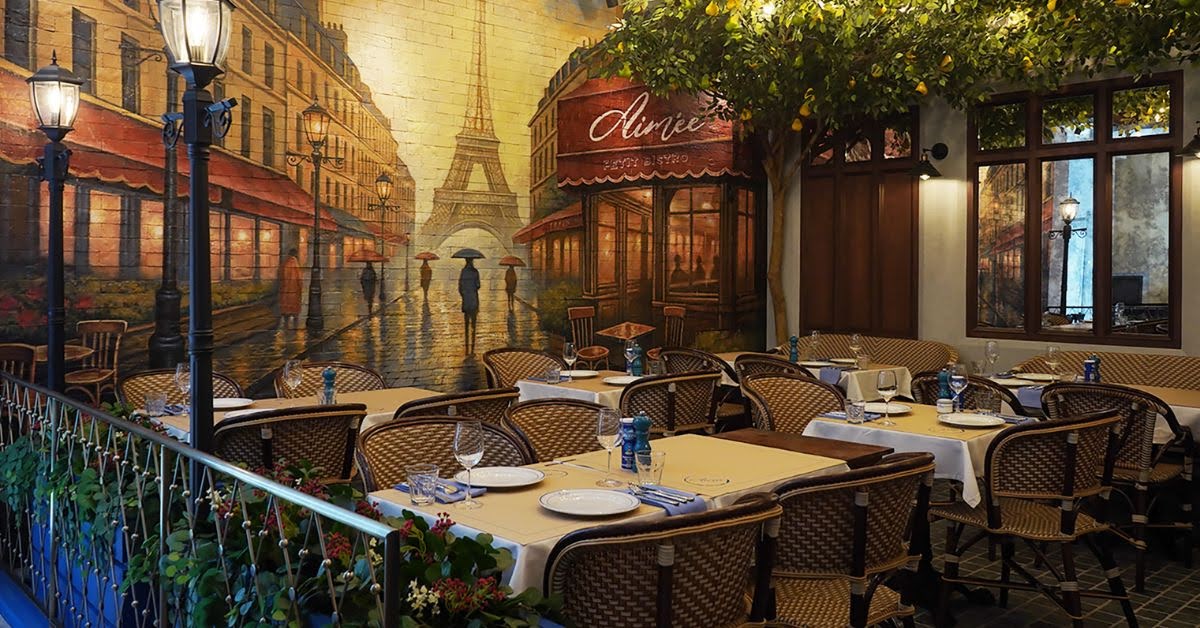
French cuisine represents far more than mere sustenance; it embodies centuries of culinary artistry, refined techniques, and an unwavering commitment to quality. With its meticulous preparation methods, premium ingredients, and elegant presentation, French gastronomy has earned its place as one of the world’s most treasured cultural legacies.
The Rich History of French Culinary Arts
The story of French cuisine begins in the Middle Ages when the aristocracy hosted elaborate banquets emphasizing beautiful food presentation. During this era, decorating and plating food with artistic precision was considered as important as the flavors themselves. Notable figures like Guillaume Tirel, known as Taillevent, authored “Le Viandier,” the first cookbook to compile French recipes and ingredients.
A pivotal transformation in French gastronomy occurred during the Renaissance when Catherine de’ Medici arrived from Italy to the French court in 1547. She introduced revolutionary Italian culinary refinements, including new ingredients like tomatoes and pasta, while elevating the importance of aesthetics, flavor, and presentation. This marked the beginning of French cuisine’s evolution into the sophisticated art form we know today.
The legendary chef François Pierre La Varenne of the 17th century is hailed as the “founder of modern French cuisine” through his book “Le Cuisinier François,” published in 1651. This work shifted culinary philosophy from heavy spice usage to emphasizing the natural flavors of the ingredients.
In the 18th and 19th centuries, Haute Cuisine gained popularity, with chefs like Marie-Antoine Carême revolutionizing French kitchen management with greater precision. He developed concepts like Sauces Mères (Mother Sauces) and the Service à la Russe format, serving courses sequentially—starter, main course, and dessert—forming the foundation of modern restaurant service.
Later, in the late 19th and early 20th centuries, French chef Georges Auguste Escoffier developed the Brigade de Cuisine system for organizing kitchen hierarchy and responsibilities, including positions such as executive chef, pastry chef, and sous chef, which remains the standard in restaurant establishments worldwide today.
What are Popular Dishes in French Cuisine?
Contemporary French cuisine offers remarkable diversity across appetizers, main courses, and desserts. Here are some globally recognized French dishes:
- Foie Gras – Premium dish made from duck or goose liver, often served seared or as pâté.
- Escargots de Bourgogne: Snails served with garlic, parsley, and butter.
- French Onion Soup: Beef broth with caramelized onions, topped with croutons and Gruyère cheese.
- Boeuf Bourguignon: Rich beef stew braised in red wine with mushrooms, onions, and bacon.
- Coq au Vin: Chicken braised in wine, served with bacon, mushrooms, and garlic.
- Quiche Lorraine: Savory tart with custard made from eggs, cream, bacon, and sometimes .cheese.
- Ratatouille: Colorful vegetable stew featuring eggplant, zucchini, bell peppers, onions, and tomatoes from Provence.
- Croissant: A crescent-shaped pastry, crispy outside and soft inside, a beloved French breakfast staple.
- Crème Brûlée – Rich custard topped with contrasting hard caramelized sugar.
- Crêpes: Thin pancakes served sweet (with sugar, jam, Nutella) or savory (with ham, cheese, eggs, and various sauces).
- Macarons – Colorful meringue-based confections with cream filling.
Does France have a “National Dish?”
Seemingly, people worldwide recognize “Tom Yum” as Thailand’s national dish, but what represents French national cuisine? Officially, France has no declared national dish. However, globally, dishes like Foie Gras, Croissant, and Ratatouille are most commonly associated with France, with these names immediately evoking thoughts of the country.
Difference Between "Basic" vs. "Haute" Cuisine
French culinary culture distinguishes between Haute Cuisine (high cuisine) and basic cuisine, with several key differences.
Haute Cuisine originated in royal and aristocratic kitchens, developed by master chefs like Marie-Antoine Carême and refined by Georges Auguste Escoffier. Its purpose was to impress, demonstrate skill, and utilize the finest ingredients. Today, Haute Cuisine has evolved into what’s called “Cuisine Classique” or “Modern French Cuisine,” maintaining standards in Michelin-starred restaurants and leading hotel dining rooms worldwide.
Basic French cuisine encompasses home cooking (cuisine bourgeoise), traditional regional dishes (cuisine du Terroir), and dishes found in a bistro or brasserie. These dishes typically feature bolder flavors, designed for hearty satisfaction, emphasizing local seasonal ingredients and traditional regional recipes while prioritizing simplicity, warmth, and approachability.
Mother Sauces: The Foundation of French Cooking
Despite French cuisine’s diversity, most dishes feature sauces as key components, enhancing and bringing out ingredient flavors. French cooking relies on Sauces Mères (Mother Sauces)—five foundational sauces:
- Béchamel: Basic white sauce made from roux with milk, mild in flavor, typically combined with other ingredients rather than used separately.
- Velouté: French for “velvet,” reflecting this sauce’s smooth texture. Made from roux with clear meat stock (chicken, fish, or other meats), giving a flavore profile according to the type of the meat used. Velouté is popular with poached or steamed fish and poultry.
- Espagnole: A basic for producing brown sauce made from dark-colored meat stock or beef stock mixed with tomato purée and diced vegetables (known as mirepoix), simmered to create a rich, dark brown sauce
- Sauce Tomate: A classic French tomato sauce made by simmering tomatoes until concentrated, seasoned with pork and various vegetables for its signature aroma.
- Hollandaise: The only mother sauce not thickened with roux. It is made by whisking egg yolks with melted butter until emulsified. However, Hollandaise is often considered the most challenging sauce due to the tendency for eggs and butter to separate, requiring proper technique. Rich in flavor, Hollandaise is commonly served with asparagus or Eggs Benedict.
Why French Cuisine is Celebrated Worldwide

-
Historical Influence
French chefs pioneered various approaches, including sauce techniques, kitchen organization, cooking standards, and culinary methods that became the foundation of global culinary education.
-
Emphasis on Excellence
French cuisine traditionally emphasizes excellence in every aspect, from sourcing premium ingredients to meticulous cooking and elegant presentation, consistently impressing guests across generations.
-
Continuous Development
Despite deep cultural roots, French cuisine continues evolving through movements like Nouvelle Cuisine and modern culinary science applications, ensuring constant innovation and relevance.
-
Global Expansion
Through cultural dissemination during the colonial era, establishment of French culinary schools (like Le Cordon Bleu), and influence of French chefs worldwide, French cuisine has spread globally, influencing countless other culinary traditions.
-
Cultural Significance
In 2010, UNESCO recognized French cuisine as the first entry in the World Heritage list for intangible cultural heritage, acknowledging food’s role as a social custom that emphasize gathering for life’s important celebrations. Additionally, the baguette received recognition as “intangible cultural heritage.”
-
MICHELIN Guide
Originating in France in the year 1900, the Michelin Guide became a global benchmark for restaurant excellence, further cementing the prestige and influence of French fine dining.
French Cuisine in Thailand
French cuisine in Thailand is diverse, well-established, and long-accepted. Initially, French culinary influence entered Thailand through European contact, particularly during King Chulalongkorn’s reign (Rama V), who traveled to Europe and brought Western cultural elements back to Siam, including French cuisine, which are widely accepted among the elite and royal court.
Today, numerous French restaurants operate in Bangkok and major tourist destinations, from fine dining establishments offering degustation menus with premium imported ingredients and expertise from French chefs, to casual bistro options like Aimee Rangsit presenting traditional French flavors in relaxed, accessible atmospheres. Many “French restaurants near me” in various areas now offer modernized approaches, blending French cooking techniques with local Thai ingredients and adapting the flavors to Thai preferences.
French cuisine’s centuries-long history runs deep in its culture, influencing restaurant cooking approaches globally, and enjoys international recognition, including in Thailand where French culinary culture has become highly popular. French cuisine represents not just food menus but stands as one of the world’s most important cultural wisdom legacies.
Experience Authentic French Cuisine at Aimée Petit Bistro

If you’re seeking an authentic French dining experience or looking for a French restaurant in Rangsit that blends the warm atmosphere of a French bistro with Parisian charm, Aimée Petit Bistro, located within Novotel Bangkok Future Park Rangsit, is ready to provide memorable experiences through French cuisine prepared with care and passion for culinary artistry.
Whether you desire classic French dishes with contemporary touches or are searching for a venue to celebrate special occasions, Aimée Petit Bistro welcomes you with warm hospitality and excellent service. As a premier French restaurant in Rangsit, we offer an authentic taste of France in the heart of Thailand.
Contact us
114 Phahonyothin Road, Prachathipat, Thanyaburi 12130, Pathum Thani, Thailand
Tel: 02-520-2525, 02-520-2526
Email: [email protected]
LINE OA: https://lin.ee/fpwEJ9sb (@novotelfuturepark)
Aimée Petit Bistro opens daily: 1:00-2:30 PM and 5:30-10:00 PM
